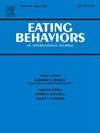Psychometric properties of the eating disorder examination questionnaire full-scale and short forms in Japanese female clinical and nonclinical samples
IF 2.4
3区 医学
Q2 PSYCHIATRY
引用次数: 0
Abstract
Objective
This study aimed to provide an empirical foundation for selecting optimal models of the Eating Disorder Examination Questionnaire (EDE-Q) full-scale and short forms in Japanese female clinical and nonclinical populations.
Method
The sample comprised 526 female patients with eating disorders and 744 female controls. The analysis systematically compared psychometric properties, including factor structures, internal consistency, and discriminative capabilities across five full-scale models and three short-form models of the EDE-Q. Furthermore, factorial estimates were evaluated across diagnostic subgroups: anorexia nervosa (AN), bulimia nervosa (BN), and binge-eating disorder (BED).
Results
Confirmatory factor analysis (CFA) did not support the proposed factor structure for any of the EDE-Q models, except for the 7-item (EDE-Q7) and 9-item (EDE-Q9) forms. The three-factor EDE-Q7 model, comprising dietary restraint, shape/weight overvaluation, and body dissatisfaction, was validated in the clinical sample but not in the nonclinical sample. Conversely, the four-factor EDE-Q9 model, comprising dietary restraint, shape/weight overvaluation, body dissatisfaction, and preoccupation, demonstrated structural validity across both clinical and nonclinical samples. CFA results indicated optimal model fit for the EDE-Q9 in the AN, BN, and BED groups, whereas for the EDE-Q7 in the BN and BED groups. Both short forms exhibited robust internal consistency and effectively differentiated between clinical and nonclinical samples.
Conclusions
The findings indicate that specific short forms of the EDE-Q offer viable alternatives in time-constrained settings, exhibiting more consistent structural validity compared to the full-scale version.
日本女性临床和非临床样本进食障碍检查问卷的全量表和短量表的心理测量特征
本研究旨在为日本女性临床和非临床人群选择饮食失调检查问卷(EDE-Q)全量表和简表的最佳模型提供经验基础。分析系统地比较了 EDE-Q 的心理测量特性,包括五个全量表模型和三个短表模型的因子结构、内部一致性和区分能力。此外,还对神经性厌食症(AN)、神经性贪食症(BN)和暴饮暴食症(BED)等诊断亚组的因子估计值进行了评估。结果除了 7 题项(EDE-Q7)和 9 题项(EDE-Q9)外,其他 EDE-Q 模型的确认性因子分析(CFA)均不支持所提出的因子结构。三因素 EDE-Q7 模型包括饮食限制、体形/体重高估和身体不满意,该模型在临床样本中得到验证,但在非临床样本中未得到验证。相反,由饮食节制、体形/体重高估、身体不满意和妄想组成的四因素 EDE-Q9 模型在临床和非临床样本中均表现出结构有效性。CFA结果表明,在AN、BN和BED组中,EDE-Q9的模型拟合度最佳,而在BN和BED组中,EDE-Q7的模型拟合度最佳。结论研究结果表明,在时间有限的情况下,特定的EDE-Q简表提供了可行的替代方法,与全量表版本相比,EDE-Q简表表现出更一致的结构效度。
本文章由计算机程序翻译,如有差异,请以英文原文为准。
求助全文
约1分钟内获得全文
求助全文
来源期刊

Eating behaviors
Multiple-
CiteScore
4.20
自引率
3.60%
发文量
65
审稿时长
60 days
期刊介绍:
Eating Behaviors is an international peer-reviewed scientific journal publishing human research on the etiology, prevention, and treatment of obesity, binge eating, and eating disorders in adults and children. Studies related to the promotion of healthy eating patterns to treat or prevent medical conditions (e.g., hypertension, diabetes mellitus, cancer) are also acceptable. Two types of manuscripts are encouraged: (1) Descriptive studies establishing functional relationships between eating behaviors and social, cognitive, environmental, attitudinal, emotional or biochemical factors; (2) Clinical outcome research evaluating the efficacy of prevention or treatment protocols.
 求助内容:
求助内容: 应助结果提醒方式:
应助结果提醒方式:


